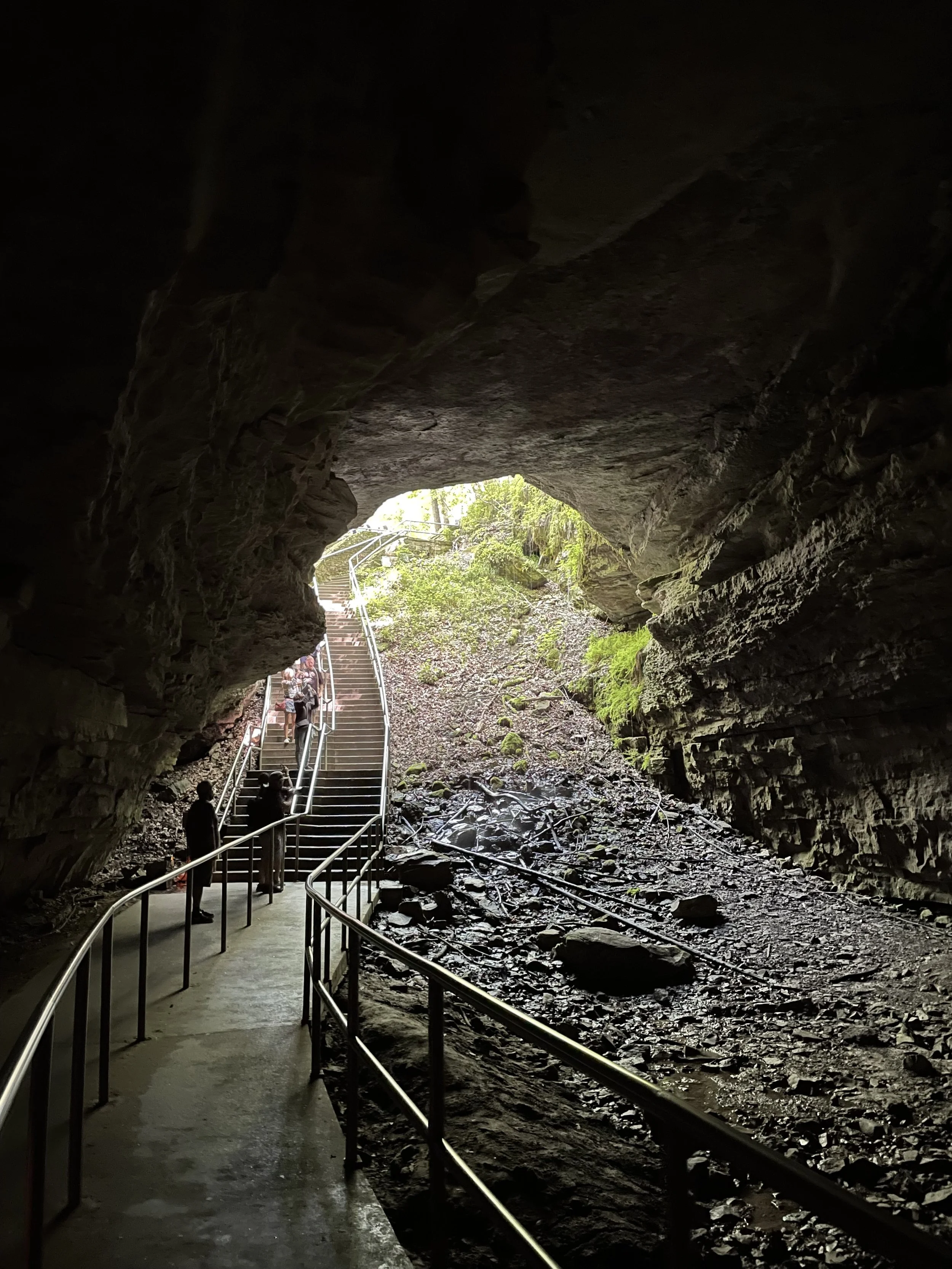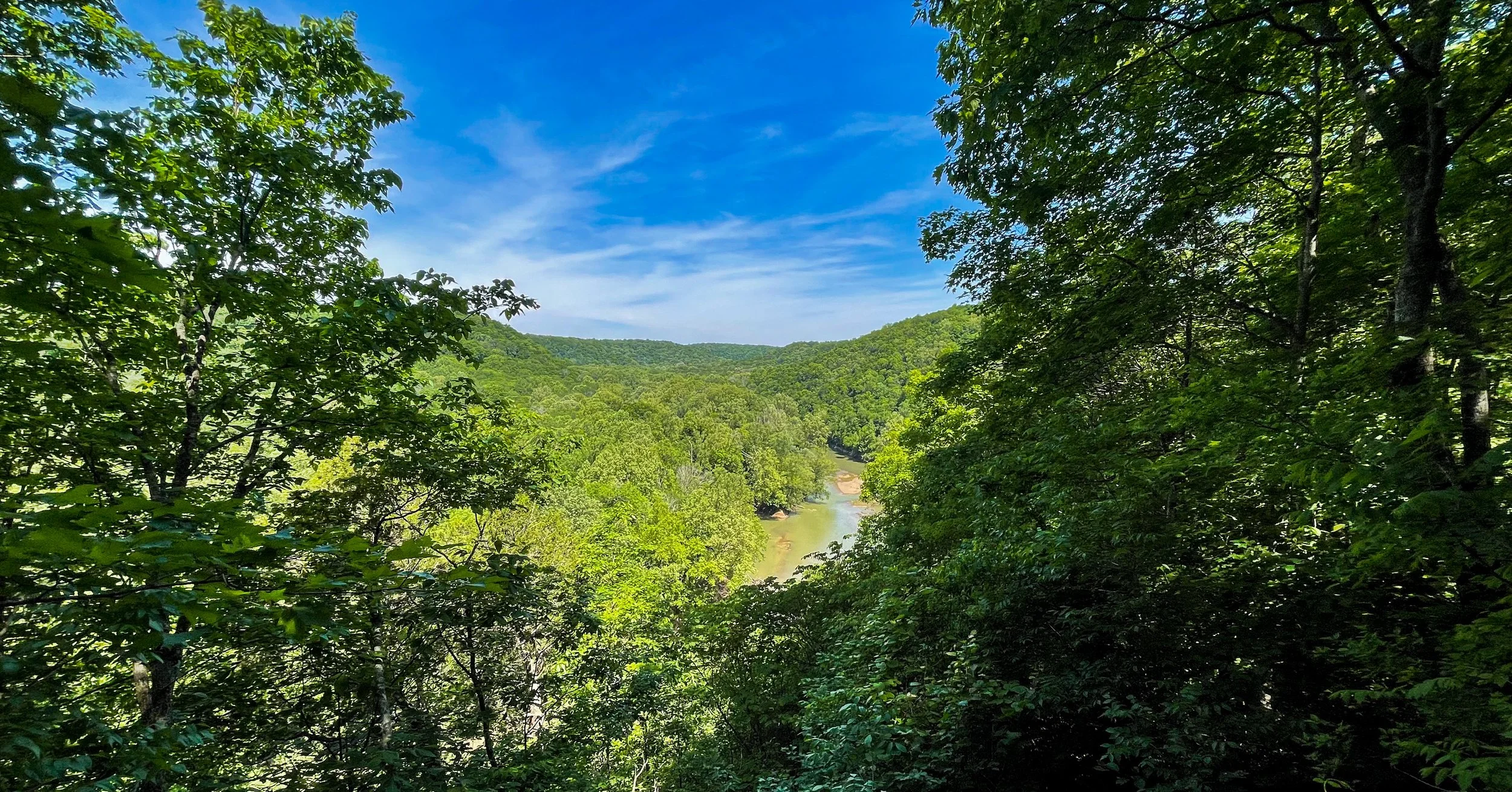#1 Mammoth Caves National Park, Kentucky
This is where my tour of the US National Parks began.
Mammoth Cave wasn’t the first national park I’d ever visited, but it’s where my national park journey really started. This is the park where I bought my first Passport to the National Parks—the small one. I didn’t know at the time how many parks I’d eventually visit, but that little book turned into something much bigger. (I upgraded to the larger version not long after.)
I visited in May 2021, when COVID restrictions had eased a bit but things were still in that weird, in-between phase. I was tired of being stuck in the house, so I decided to make the 6.5-hour drive from Chicago to Bowling Green, Kentucky. It’s the closest decent-sized city near the park, and I crashed there for the night before heading out early the next morning.
I arrived at the park about an hour before the visitor center opened. I used the time to wander the grounds, take a few photos, and just enjoy the quiet. This was actually the first national park sign I ever took a picture next to, which feels fitting in hindsight.
When the visitor center opened, I bought a ticket for the Historic Tour, which lasted about two hours and covered roughly two miles through some of the oldest parts of the cave. While waiting for the tour to start, I stopped by the front desk, chatted with a ranger, then wandered into the gift shop. After talking with the clerk, I decided to grab the passport book. She walked me through how it worked and helped me get my first stamp.
After the cave tour, I still had plenty of daylight left, so I stuck around and hiked a few of the trails above ground. It was spring, the weather was decent, and it felt good to stretch my legs after being underground for a while. There were still a few COVID-related rules in place, but nothing that took away from the experience.
A Bit About the Park
Mammoth Cave National Park is home to the longest cave system in the world—yes, the longest. With over 426 miles of mapped underground passageways and more being discovered each year, it lives up to its name. But this park isn’t just about what’s beneath your feet. Above ground, you’ll find rivers, trails, dense forest, and wildlife that make it a full-fledged national park experience, not just a cave detour.
This corner of south-central Kentucky holds layers of natural and human history. Indigenous peoples were the first to explore the cave more than 5,000 years ago. Later, during the War of 1812, the cave was mined for saltpeter (a component in gunpowder), and enslaved African Americans were tasked with much of that dangerous labor. One of them, Stephen Bishop, later became a legendary cave guide—so respected that his name still comes up on ranger tours today.
Mammoth Cave officially became a national park in 1941 and was designated a UNESCO World Heritage Site in 1981. Today, it draws visitors from around the world—many of them stunned by just how massive and intricate the cave system really is.
Visitor Centers
There’s one main visitor center here, and it’s where you’ll start pretty much everything.
📍Mammoth Cave Visitor Center
1 Mammoth Cave Parkway, Mammoth Cave, KY 42259
Open year-round (except major holidays), this is the hub for all cave tours, information, and exhibits. You can grab your park map, talk to rangers, book a tour (if you didn’t do so online already), and check out the museum-style displays about the geology and history of the area. This is also where you’ll pick up your national park passport stamp.
There’s a small gift shop and a café nearby if you need a bite before or after heading underground.
Entrance Fees and Tour Costs
Access to the park itself is free—that includes hiking, river access, and the visitor center. However, you must purchase tickets to enter the cave. Tour prices vary depending on the route, length, and intensity. Most range from $10 to $30, and some popular tours book out well in advance. If you’re planning a visit during spring, summer, or fall weekends, make reservations on Recreation.gov ahead of time.
Best Cave Tours
There are more than a dozen tours offered, ranging from easy walks to full-on cave crawls. Some highlights:
Historic Tour: This is the classic. You’ll follow in the footsteps of early explorers and miners. 2 hours, 2 miles. Moderate difficulty with lots of stairs.
Domes & Dripstones Tour: Focuses more on formations than history. You’ll see stalactites and stalagmites in the Frozen Niagara section. 1.25 hours, 0.75 miles.
Frozen Niagara Tour: The shortest and easiest tour. Great for families or anyone with limited mobility. Less than an hour.
Wild Cave Tour: Not for the faint of heart. This one involves crawling, squeezing, climbing, and getting dirty. You’ll need to be fit, wear old clothes, and mentally prepared. 6 hours long.
Tours change seasonally, and some routes may close due to conditions or bat protection efforts, so double-check before you go.
Things to Do Above Ground
Don’t sleep on the surface of Mammoth Cave. The park protects over 52,000 acres of forest, plus stretches of the Green and Nolin Rivers. It’s a great place for:
Hiking: More than 80 miles of trails, including the Green River Bluffs Trail, Echo River Spring Trail (accessible), and Sinkhole Trail.
Biking: Several trails allow bikes, especially around the Maple Springs area.
Paddling: Canoes and kayaks are allowed on the Green River, with boat launches inside the park.
Camping: There are three campgrounds and several backcountry sites. Mammoth Cave Campground is the most popular.
Best Places to Take Photos
The Historic Entrance—even if you don’t go on a tour, you can walk up to the massive mouth of the cave. It’s haunting and cool (literally).
Frozen Niagara formations if you’re on that tour.
Above ground, the Green River ferry, the overlooks on the Green River Bluffs Trail, and the Heritage Trail boardwalk offer scenic shots.
The visitor center area has some excellent signage if you’re collecting those national park sign photos.
Accessibility Notes
Mammoth Cave has made notable strides in accessibility:
The Frozen Niagara Tour is the most accessible cave tour, though it still involves stairs. However, the Heritage Trail outside the visitor center is fully accessible, paved, and flat.
The Echo River Spring Trail is a standout—it’s a fully accessible trail that even includes tactile maps and audio-enhanced panels for visually impaired visitors.
The visitor center is wheelchair-accessible, and assistive listening devices are available for many tours.
Other Helpful Info
Dress in layers for cave tours. It stays around 54°F (12°C) underground, year-round.
No bags larger than a small purse are allowed in the cave. There are lockers at the visitor center.
Watch your shoes: To help stop the spread of White Nose Syndrome in bats, you may be asked to walk through a disinfectant mat after your tour.
Cell signal is spotty in the park, so download maps ahead of time.
Wildlife sightings above ground include deer, wild turkeys, and—if you’re lucky—barred owls or pileated woodpeckers.







